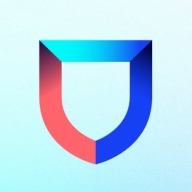

Tenable.io Container Security and Lacework FortiCNAPP compete in container security. Lacework FortiCNAPP appears superior due to its comprehensive features, justifying its higher price.
Features: Tenable.io Container Security offers vulnerability management, integration capabilities, and efficient identification of vulnerabilities, enhancing security in a streamlined way. Lacework FortiCNAPP provides security analytics, multi-cloud environment support, and enhanced threat detection, offering detailed security insights beyond simple vulnerability management.
Room for Improvement: Tenable.io could enhance real-time monitoring, expand threat intelligence capabilities, and improve interface usability. Lacework might benefit from simplifying its deployment process, reducing alert noise, and enhancing report customization options.
Ease of Deployment and Customer Service: Tenable.io Container Security is known for easy deployment and robust customer support, simplifying integration. Lacework FortiCNAPP, while offering detailed documentation and support, requires more initial setup due to its complex features.
Pricing and ROI: Tenable.io Container Security is priced competitively, offering a quick ROI through efficient vulnerability management. Lacework FortiCNAPP, while more expensive, provides a substantial ROI by delivering extensive security features and insights that justify the higher cost.


Lacework FortiCNAPP provides robust cloud security, combining vulnerability management and multi-cloud insight with user-friendly controls, machine learning detection, and compliance support.
Lacework FortiCNAPP specializes in cloud security by merging machine learning anomaly detection with agent-based vulnerability management to offer detailed alerts and compliance reports. Its comprehensive approach allows continuous monitoring across AWS and Kubernetes, providing insights from an attacker's perspective. The platform offers automation and seamless Slack integration, facilitating collaborative and efficient cloud security management. Users value its ability to handle multi-cloud environments and scan IAC scripts, configurations, and compute nodes across AWS and GCP.
What are the key features?Organizations across sectors leverage Lacework FortiCNAPP for cloud security, focusing on compliance, security posture, and vulnerability management. It is widely used for monitoring AWS and Kubernetes environments, scanning IAC scripts, configurations, and securing compute nodes. It supports multi-cloud security posture management and log ingestion, enabling companies to maintain strong cloud infrastructures without dedicated security layers.
Tenable.io Container Security is a container security platform that delivers end-to-end visibility of Docker container images, providing vulnerability assessment, malware detection, and policy enforcement before and after deployment. It also integrates into your DevOps pipeline to eliminate security blind spots without slowing down software development. In addition, Tenable.io Container Security provides proactive visibility and security so your organization can solve the security challenges of containers at the speed of DevOps.
Tenable.io Container Security Features
Tenable.io Container Security has many valuable key features. Some of the most useful ones include:
Tenable.io Container Security Benefits
There are many benefits to implementing Tenable.io Container Security. Some of the biggest advantages the solution offers include:
We monitor all Container Security reviews to prevent fraudulent reviews and keep review quality high. We do not post reviews by company employees or direct competitors. We validate each review for authenticity via cross-reference with LinkedIn, and personal follow-up with the reviewer when necessary.